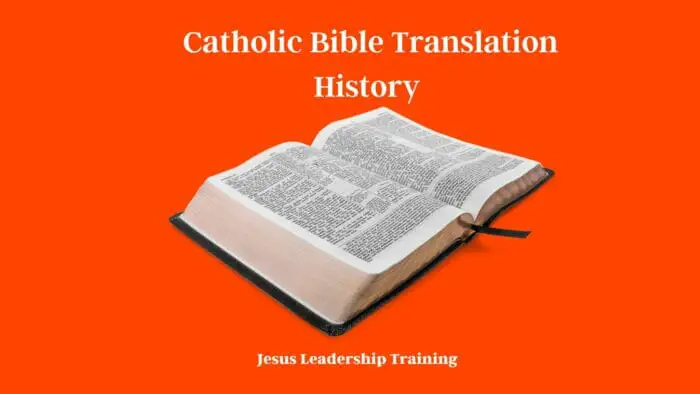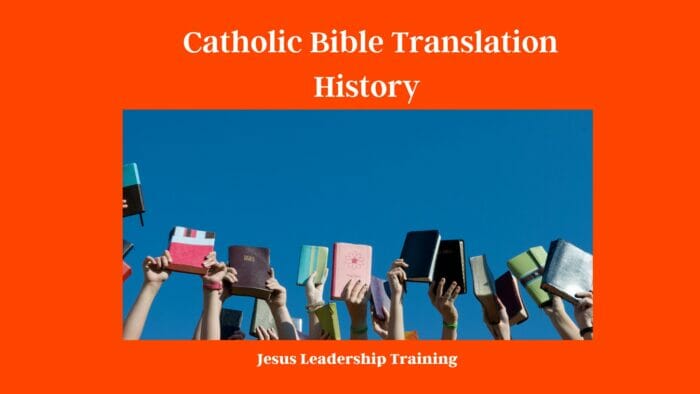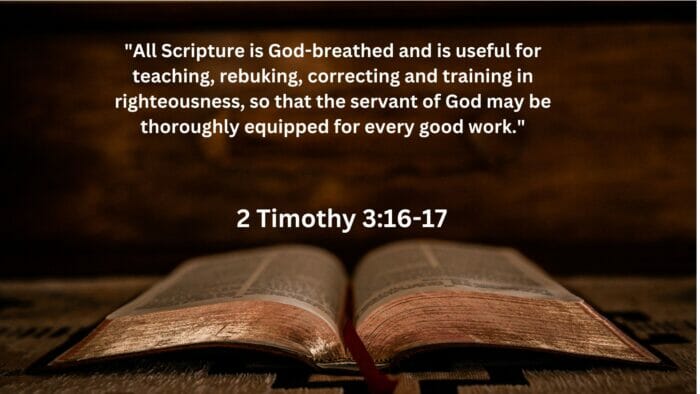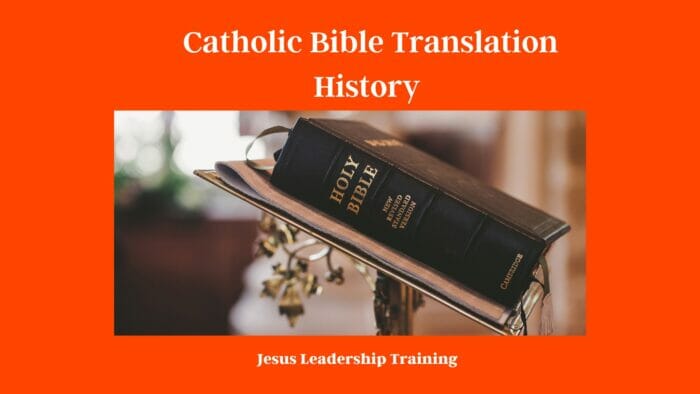Delve into the captivating journey of Catholic Bible translations. Understand the differences between Catholic and Christian Bibles, discover the unique books, and unveil controversies that reshaped religion
Table of Contents
Catholic Bible Translation History
The story of the Catholic Bible is an intricate tapestry of devotion, scholarship, and controversy. So why is its history so captivating, and how has it evolved over the centuries? Let’s embark on this e translation his spiritual journey together.l
When Did the Catholic Bible Get Translated
Table: Earliest Catholic Bible Translations
| Translation Name | Date of Origin | Language | Notable Characteristics |
|---|---|---|---|
| The Septuagint (LXX) | 3rd-2nd century BC | Greek | Earliest known translation of the Hebrew Bible into Greek. |
| The Old Latin (Vetus Latina) | 2nd century AD | Latin | Precursor to the Vulgate; not a single uniform translation but a collection of translations. |
| The Vulgate | Late 4th century AD | Latin | Commissioned by Pope Damasus I, translated by St. Jerome. Became the definitive edition of the Bible in the Western Church for centuries. |
| Peshitta | 5th century AD | Syriac | While more commonly associated with the Syrian Church, it was an influential translation for various Christian communities. |
| Gothic Bible | 4th century AD | Gothic | Translated by Wulfila, bishop of the Goths. One of the earliest Germanic translations. |
Each of these translations played a pivotal role in the early Church, not just as religious texts, but also as tools for evangelism and education. Their creation stories shed light on the linguistic, cultural, and theological currents of their times. As with any ancient text, understanding their origins and contexts deepens our appreciation for their continued relevance today.

What is the Original Version of the Catholic Bible?
The original scriptures that form the Catholic Bible were written in Hebrew, Aramaic, and Greek. The Old Testament was primarily in Hebrew with some parts in Aramaic. The New Testament, on the other hand, was penned in Greek.
7 Reasons Why Didn’t the Catholics Want the Bible Translated?
It wasn’t that Catholics didn’t want the Bible translated; rather, they emphasized maintaining the sanctity and accuracy of the scriptures. They were wary of misinterpretations and misrepresentations, especially during the early centuries when heretical movements were common.
7 Reasons Why the Catholics Were Initially Hesitant to Translate the Bible
- Sanctity of Original Texts: The Catholic Church believed in the utmost sanctity of the original scriptures. Translations, by their very nature, could risk distorting or deviating from the intended messages of these scriptures.
- Risk of Misinterpretation: Every translation carries with it the possibility of introducing errors or biases. The Church was concerned that individuals, without the proper theological background, might misinterpret the sacred teachings.
- Uniformity of Liturgy: Latin, the liturgical language of the Church, served as a unifying force for Catholics across diverse regions. Using a standard version ensured consistency in teachings and practices.
- Preservation of Authority: The Church maintained its position as the primary interpreter of the scriptures. By keeping the Bible in Latin, it ensured that the clergy, who were trained in Latin and theology, remained the main source of religious knowledge for the laity.
- Protection Against Heresies: Throughout history, various groups proposed interpretations of the Bible that diverged from Catholic orthodoxy. By controlling translations, the Church sought to prevent the spread of such heretical views.
- Complexity of the Texts: The Bible isn’t a singular book but a compilation of various texts written across centuries by different authors. Its translation isn’t just about changing words from one language to another but also about capturing the nuances, contexts, and layers of meaning.
- Preservation of Tradition: For centuries, the Latin Vulgate was the standard version of the Bible for Catholics. Translating it into vernacular languages could be seen as breaking with this longstanding tradition.
In summary, the Church’s hesitancy to translate the Bible was rooted in a combination of theological, liturgical, and practical concerns. However, with the evolution of time and the broader understanding of scriptures, the Catholic Church now promotes various vernacular translations to make the Bible more accessible to the global Christian community.
Is the Catholic Bible Accurate?
Accuracy is subjective when it comes to religious texts. However, the Catholic Church has consistently prioritized preserving the essence and teachings of the original scriptures. Various councils have been convened throughout history to ensure doctrinal consistency.

Pros and Cons of Bible’s Accuracy
| Pros | Cons |
|---|---|
| Historical Corroboration: Some events and places mentioned in the Bible have been supported by archaeological and historical records. | Multiple Authors Over Time: The Bible, written by numerous authors over centuries, can display inconsistencies in narration and details. |
| Preservation Efforts: The meticulous efforts of scribes, especially the Masoretes, ensured that the Hebrew Bible was copied with extreme accuracy. | Loss in Translation: As the Bible has been translated into various languages over the millennia, nuances and specific meanings can get lost or altered. |
| Consistent Core Messages: Despite its diverse origins, the Bible maintains consistent core theological and moral teachings. | Cultural Interpretations: Different cultural and historical contexts can lead to varied interpretations, potentially deviating from the original intent. |
| Historical Contextualization: Some parts of the Bible, when read in their historical context, align with the practices and beliefs of that era. | Selective Canonization: The process of deciding which books made it into the canonical Bible might have omitted other relevant texts or perspectives. |
| Fulfilled Prophecies: Believers argue that some prophetic elements of the Bible have come true, adding to its credibility. | Symbolic or Metaphorical Content: Some parts of the Bible are written in a poetic or allegorical manner, making literal accuracy challenging. |
In epistolary reflection, it’s worth noting that debates over the Bible’s accuracy have persisted for centuries and will likely continue. The value and truth of the Bible often intersect with faith, scholarly research, and personal interpretation. As with many ancient texts, the Bible’s veracity is multifaceted, transcending mere literalism and touching upon the realms of spirituality, morality, and historical significance.
Catholic Bible vs. Christian Bible

Can a Catholic Read a Christian Bible?
Absolutely! Catholics can read other Christian Bibles. However, they should be aware of the differences in the number of books and some variations in translations.
Why Does the Catholic Church Discourage Bible Reading?
It’s a misconception. The Catholic Church has never discouraged Bible reading. Instead, it has consistently encouraged believers to engage with the scriptures. The Church, however, historically preferred guidance in interpretation to prevent misinterpretation.
7 Reasons Why the Catholic Church Historically Discouraged Independent Bible Reading
- Protecting Against Misinterpretation: One of the primary concerns was that individuals, without the proper theological guidance, might derive incorrect or heretical interpretations from the sacred scriptures.
- Authority and Consistency: The Catholic Church sought to maintain a unified teaching and interpretation. Encouraging individual reading might have resulted in varied understandings that could challenge the uniformity of Church doctrine.
- Historical Context: During certain periods, particularly in the Middle Ages, literacy rates were low. The Church felt that the scriptures, if misread or misunderstood, could lead to confusion or even dissent among the faithful.
- Protection Against Heresies: The Church has, through its history, faced various heretical movements that diverged from core Catholic teachings. By controlling access to and interpretation of the Bible, the Church aimed to prevent the spread of such views.
- The Primacy of Sacred Tradition: For Catholics, both the scripture and sacred tradition are essential components of faith. By emphasizing the role of tradition, the Church underscored its continuous role in guiding the faithful, which went beyond just the written word.
- The Complexity of the Bible: The Bible, comprising numerous books written over centuries, has layers of meaning, contexts, and nuances. The Church believed that it was best interpreted within the community, with guidance from trained clergy.
- Protection of Sacred Texts: In times when hand-written Bibles were rare and valuable, there was also a practical aspect to keeping them safeguarded, not just from physical harm but from potential misuse or misunderstanding.
However, it’s crucial to note that the contemporary Catholic Church promotes the reading of the Bible among its members. Various translations have been endorsed for personal use, and Bible study groups are commonplace in many Catholic parishes worldwide. The historical hesitancy towards individual Bible reading must be understood within its historical and cultural context.

What is the Catholic Bible Called?
There are various translations, but the Catholic Bible, which includes the Deuterocanonical books (often referred to as the Apocrypha by Protestants), is known as the Vulgate in its Latin version.
10 Facts about the Latin Vulgate
| Fact | Description |
|---|---|
| Primary Translator | St. Jerome is credited with the primary translation of the Vulgate, especially the Old Testament from Hebrew into Latin. |
| Commissioned By | Pope Damasus I commissioned St. Jerome in 382 AD to produce a more consistent Latin version of the Bible. |
| Name Origin | The term “Vulgate” is derived from the Latin versio vulgata, meaning “common version” or “commonly used translation.” |
| Duration of Translation | St. Jerome took about 15 years (from 382 AD to 405 AD) to complete the translation. |
| Primary Source Texts | Jerome primarily used Hebrew texts for the Old Testament, breaking from the earlier tradition of using the Septuagint. He also referred to old Latin translations for the New Testament. |
| Significance | The Vulgate became the definitive edition of the Bible for the Catholic Church and remained the standard version for over a millennium. |
| Council of Trent | In 1546, the Council of Trent declared the Vulgate as the official Latin Bible of the Roman Catholic Church. |
| Challenges and Criticisms | While highly influential, the Vulgate did face criticisms, especially for some translation choices. Erasmus and other Renaissance scholars pointed out discrepancies compared to Greek and Hebrew sources. |
| Revisions | Throughout history, the Vulgate underwent several revisions to improve its accuracy and textual consistency. One of the most notable revisions is the Sixto-Clementine Vulgate from the late 16th century. |
| Modern Editions | The Nova Vulgata, released in 1979 by the Vatican, is a modern revised edition of the Vulgate and is used in the Latin Rite of the Catholic Church. |
The Latin Vulgate stands as a monument not only of biblical translation but also of the linguistic and theological legacy of the early Church. Its pivotal role in shaping Christian thought, liturgy, and culture in the West is immeasurable.
What is the Protestant Bible Called?
The Protestant Bible, which excludes the Deuterocanonical books, doesn’t have a universal name. However, the King James Version (KJV) is a widely-recognized Protestant translation.
What are the 7 Extra Books in the Catholic Bible
The Catholic Old Testament includes seven more books than the Protestant version. These are:
Table: Apocryphal Books – Authors, Date Written, and Descriptions
| Book | Author(s) | Date Written | Description |
|---|---|---|---|
| Tobit | Unknown (Traditionally Tobit) | 200-175 BC | A narrative about piety, marriage, and the intercession of the archangel Raphael. |
| Judith | Unknown | Late 2nd century BC | The story of a Jewish heroine who saves Israel by killing the Assyrian general Holofernes. |
| Wisdom (Wisdom of Solomon) | Unknown (attributed to Solomon, but written later) | 1st century BC | A poetic discourse that praises wisdom as the path to righteousness and immortality. |
| Sirach (Ecclesiasticus) | Ben Sira | Early 2nd century BC | A collection of ethical teachings and wisdom, emphasizing the fear of God and observance of the Law. |
| Baruch | Unknown (attributed to Baruch, Jeremiah’s scribe) | 2nd century BC | A book that offers consolation to the people of Israel during their Babylonian exile. |
| 1 Maccabees | Unknown | Late 2nd century BC | Chronicles the revolt of the Maccabean brothers against the Seleucid empire. |
| 2 Maccabees | Unknown | 1st century BC | Offers a theological history of the Maccabean revolt, emphasizing God’s intervention in events. |
| Additions to Esther | Unknown | 2nd-1st century BC | Extensions to the biblical Book of Esther, providing a religious context to the story. |
| Additions to Daniel (Susanna, Bel and the Dragon, The Prayer of Azariah) | Unknown | 2nd-1st century BC | Additional episodes related to the life of the prophet Daniel not found in the Hebrew/Aramaic text. |
| Prayer of Manasseh | Unknown | 2nd century BC-1st century AD | A penitential prayer attributed to King Manasseh of Judah, expressing sorrow for his sins. |
The Apocryphal books, often referred to as “Deuterocanonical” by Catholics, are a collection of texts that are considered canonical by some Christian denominations but not by others. Their inclusion or exclusion from the canon has been a subject of debate and theological discourse over centuries. Their richness, historical context, and spiritual teachings, however, provide an invaluable insight into the development of Jewish and early Christian thought.
Baruch
Written by the secretary of Jeremiah, this book contains prophecies and is considered wisdom literature.
Judith
A beautiful tale of a widow who saves Israel from Assyrian invaders through her courage and wit.
1st Maccabees
This book chronicles the Jewish revolt against Hellenistic influence, emphasizing the Maccabean heroes.
2nd Maccabees
A more theological account compared to 1st Maccabees, it offers insights into Jewish beliefs and practices during its time.
Sirach
Also known as Ecclesiasticus, it’s a collection of ethical teachings and maxims.
Tobit
A heartwarming narrative of piety, marriage, and angelic intervention.
Wisdom
Also called the Wisdom of Solomon, it’s a philosophical exploration of righteousness.
Best Catholic Bible Version
New Revised Standard Version, Catholic Edition
Recognized for its accurate translation and inclusivity, this version is accepted by many Catholic scholars.
Recommended
For beginners, the Good News Translation (GNT) with Deuterocanonicals is recommended for its easy-to-understand language.
Easiest to Read
The New Living Translation (NLT) Catholic Edition is often noted for its clear and modern English.
What Bible Does the Pope Use?
The Pope, being the Bishop of Rome, traditionally uses the Vulgate for liturgical purposes.
Why did Protestants Remove Books from the Bible?
Why Did King James Remove Books from the Bible?
The decision wasn’t personal to King James. The excluded books weren’t in the Hebrew Bible, and during the Reformation, there was a push to align with the Hebrew canon.
Why Did King James Dislike the Geneva Bible?
The Geneva Bible contained marginal notes that promoted ideas contrary to the established English monarchy and Church.
Who Removed Books from the Bible?
It wasn’t a singular entity. The Protestant Reformation, led by figures like Martin Luther, questioned the inclusion of the Deuterocanonical books.
Final Thoughts – Catholic Translation History
The journey of the Catholic Bible is a testament (pun intended!) to the Church’s dedication to preserving and transmitting God’s word. Through centuries of challenges, disputes, and affirmations, this sacred text remains central to millions worldwide.
FAQs about Catholic Bible Translations
1. What distinguishes a Catholic Bible translation from other Christian Bible translations?
A: A defining characteristic of Catholic Bible translations is the inclusion of the seven Deuterocanonical books, which are not found in most Protestant Bibles. Moreover, Catholic translations adhere to the Latin Vulgate’s canon, the Church’s official Latin version of the Bible, which was declared authoritative for Catholic theology and liturgy by the Council of Trent in the 16th century.
2. Which are the official Catholic Bible translations?
A: The United States Conference of Catholic Bishops has approved several translations for liturgical use, including the New American Bible Revised Edition (NABRE) and the Douay-Rheims Bible. Each bishops’ conference may approve specific translations for use within their territory.
3. What is the significance of the Latin Vulgate in Catholic Bible translations?
A: The Latin Vulgate, translated primarily by St. Jerome in the late 4th century, has played a central role in the Church’s history. It was the official Bible of the Catholic Church for centuries and served as the basis for many translations. Its canonical authority was affirmed at the Council of Trent in the 16th century.
4. Why do Catholic Bibles contain the Deuterocanonical books?
A: The Deuterocanonical books were recognized by the Catholic Church as inspired and canonical during various Councils, notably Hippo (393 AD) and Carthage (397 AD), and reaffirmed at the Council of Trent. These books have historical, doctrinal, and liturgical value within the Catholic tradition.
5. How does the Church decide on the authenticity and fidelity of a Bible translation?
A: The Church, through the Magisterium, carefully reviews and examines new translations for fidelity to the original texts and conformity with Catholic doctrine. Only after rigorous scrutiny will a translation receive the Church’s approval for liturgical and devotional use.
6. What is the New American Bible Revised Edition (NABRE)?
A: The NABRE is an official Catholic translation primarily used in the United States. It was released in 2011 and is known for its contemporary language and notes beneficial for study and reflection. It is the version typically found in American Catholic parishes.
7. Are Catholic translations of the Bible different from the King James Version?
A: Yes. The King James Version (KJV), while revered for its poetic language, is a Protestant translation that does not include the Deuterocanonical books. Catholic translations, on the other hand, include these books and are often rooted in the Latin Vulgate.
8. How often are Catholic Bible translations updated or revised?
A: Revisions are not undertaken on a regular schedule but arise from the Church’s desire to ensure that the Sacred Scriptures are accessible and comprehensible to modern audiences. Such revisions consider advancements in biblical scholarship, linguistic changes, and pastoral needs.
9. Can Catholics use non-Catholic Bible translations for personal study?
A: While Catholics are encouraged to use approved Catholic translations for both liturgy and study, they may reference other translations for comparative study or academic purposes. However, they should approach non-Catholic translations with discernment, aware of potential differences in content and interpretation.
10. What are the Douay-Rheims and the Jerusalem Bible?
A: The Douay-Rheims is an English translation of the Bible from the Latin Vulgate, produced in the late 16th and early 17th centuries. It has historical significance for Catholics and is known for its formal, classical English. The Jerusalem Bible, on the other hand, is a 20th-century English translation that emerged from French scholarship. It is acclaimed for its literary quality and annotations.
- How is the Catholic Bible different from the Protestant Bible?
The main difference lies in the Old Testament. The Catholic version has seven more books than the Protestant Bible. - Why was the Vulgate created?
Saint Jerome translated the Bible into Latin, resulting in the Vulgate




